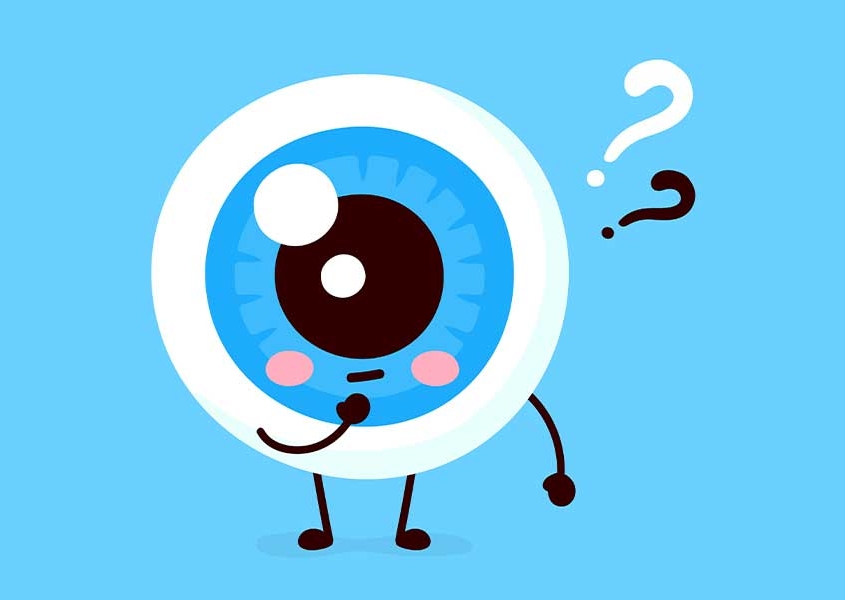Dry Eye 101: Symptoms, Causes, and Treatment

Medically reviewed by Brad Boyle, OD – Written by Advanced Family Eye Care staff on August 14, 2020 – Last edited on May 31, 2023
 Medically reviewed by Brad Boyle, OD – Written by Advanced Family Eye Care staff on August 14, 2020 – Last edited on May 31, 2023
Medically reviewed by Brad Boyle, OD – Written by Advanced Family Eye Care staff on August 14, 2020 – Last edited on May 31, 2023
Dry eyes, also referred to as dry eye syndrome, is a very common condition and can become troublesome if not treated right away.
Here is everything you need to know about your dry eyes, including symptoms, types, and treatment.
What is Dry Eye Syndrome?
Occasional dry eye can be experienced by almost everyone. However, having persistent dry eyes is classified as dry eye syndrome. Dry eye syndrome is a condition that occurs when your tears aren’t able to provide enough lubrication. The tears produced may be deficient (referred to as aqueous dry eye) or of poor quality (referred to as evaporative dry eye).
How Common is Dry Eye?
Dry eye is one of the most common eye conditions. While all ages can experience chronic dry eyes, it is especially common with middle-aged and older individuals. An estimated 4.88 million Americans age 50 and older have dry eyes. Of these, over 3 million are women and 1.68 million are men.
Symptoms
- A feeling of having something in your eyes
- A burning, stinging, or scratchy sensation
- Light sensitivity
- Redness in the eye
- Difficulty with contact lenses
- Trouble driving at night
- Blurred vision
- Eye fatigue
A common symptom that patients may complain of is a foreign body sensation that they often describe as if there’s sand in their eyes. They also mention a burning or stinging sensation in the eye. They report that when they close their eyes, they water a little bit and temporarily makes it feel a little better. They also complain of redness in the eyes. Last, they talk about the eyes being watery which ironically is a symptom of dry eye.
Treatment
There are two types of dry eye – aqueous dry eye which occurs with a tear deficiency, and evaporative dry eye which occurs with the tears produced being of poor quality. The treatment methods will differ for each type.
Aqueous Dry Eye Treatment
When the eyes don’t produce enough tears, they are treated with artificial tears usually three or four times a day, and a good drop is Systane Ultra.
What you should not use for aqueous dry eye is red-out drops. If it says “get the red-out”, you don’t want to use it because all that does is constrict the blood vessels and then when you’re done using it, the eyes get even more red than before. This keeps you addicted to that drop and it doesn’t really treat anything.
Evaporative Dry Eye Treatment
For evaporative dry eye treatment, we suggest you do utilize a warm compress. For example, take an old sock (clean of course) and put some uncooked rice in it. Tie the sock off and put it in the microwave for just a few seconds so it’s warm and holds heat. The rice in the sock will hold heat better than a warm washcloth.
Next, you’ll place the sock with rice on the eyes. Keep the warm compress on the eyes for about three to five minutes. What this does is help open up the glands in the eyelids and helps express them a little more, producing a better quality of tear film and keeping those tears on the eye longer. That will help prevent the wateriness, and after about two or three weeks, you should be able to tell a big difference.
The Bottom Line
While most everyone has experienced the occasional dry eye, if it is persistent it may be time to see a doctor.
Dry eye syndrome is chronic and progressive, meaning it will only get worse without treatment. If you’ve tried artificial tears and compresses but they aren’t working, schedule a consultation today and we will give you an in-depth evaluation to develop a specialized treatment just for you.
At Advanced Family Eye Care, we are committed to ensuring healthy eyes and quality vision.





